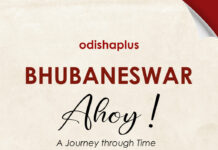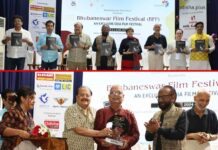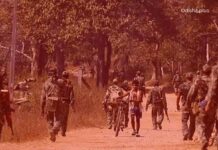Dr.Fakir Mohan Nahak
THE TELEVISION NEWS INDUSTRY IN ODISHA HAS GONE THROUGH A PROGRESSIVE JOURNEY IN THE PAST TWO DECADES. IN THIS SERIES DR. FAKIRA MOHAN NAHAK PRESENTS THE MEDIA HISTORY BLENDED WITH HIS CLOSE OBSERVATION ON THE FAST-CHANGING INDUSTRY.
The ETV Oriya team was relatively a young one when it started. Majority of the team members were young and inexperienced in television journalism. However, the team worked hard, gained experience and expertise over time and were able to set a standard and create a brand that was well appreciated and loved by people. It didn’t happen overnight. It was a continuous process that involved all the stakeholders of the channel to carve a niche of its own in the hearts of viewers.

In the initial days as ETVIANs, mistakes were bound to happen for many of the team members. The challenge was to identify the mistakes, rectify those and make sure non-occurrence of the same mistakes. All the flaws or errors that happened while preparing and presenting the news were addressed on the same day in the news desk. That’s why every day there was a meeting at the news desk. It was referred as the Desk Meet.
Running a channel or hourly and scheduled news bulletins is a continuous process. Proper handshaking and coordination has to happen between teams working in shifts. The editorial team that works in the morning shift informs the editorial team that works in the afternoon shift about the major news of the day and all the follow-ups that has to be done.

On the other hand, it was part of the routine activity to log all the errors in a register that occurred during all the bulletins that went on air from the previous night to the afternoon of that day. A copy-editor or member of the team that prepares the bulletin monitors the bulletin while it is on air and writes the errors if any in the monitoring register. As a result, the anchor, copy editor or panel producer who made the mistake immediately fixes it and takes care not to re-broadcast the erroneous information.
The purpose of the meeting was not to discredit anyone, but it was part of the continuous effort to improve the quality of the programme.

At that time, Odia audiences living in and out of the state used to write a large number of letters to the ETV News Desk. Most of the time, it was one of the part of the meeting to go through those letters.
One viewer from Angul district had expressed his displeasure in one of those letters and had mentioned “If the information that comes on the TV screen is erroneous and contains spelling mistakes, what would our children learn from it? Our children learn a lot from your channel and it has let them know the mother language better. This kind of mistake is not expected from you. So please pay attention to this.”

That letter was an eye-opener for the whole team. Even today it gives goosebumps when I remember that letter of the day. It also made us realize that it’s very difficult and time taking process to win people’s confidence but hardly takes any time to lose it. It was a lesson for a lifetime. It was also evident how emotionally and socially ETV was connected to the general public.
Every field of work requires up-skilling. Television journalism is no different from that. Everyone associated with television journalism need to build and improve their required competencies. The network and channel management had always focussed on the competency development of the employees.

Various workshops were held at regular intervals for news anchors, copy editors,producers and other members of the desk. Whether it was technical know-how on television or reporting, camera handling, DNG operations, live reporting from the field, visual editing, voice over and anchoring, special training programmes and workshops were conducted to make ETVIANS professionally sound and competent.
Dr. Jitendra Ram Prakash, a senior presenter and one of the most well-known voice-over artists in the country, who had worked in the early stages of Doordarshan and Zee Media, had conducted special workshops on voice over and anchoring. Many members of the ETV Oriya, including Bibhuti Biswal, Mrinalkanti Nanda, Rajashree Mohapatra, Bhavani Shankar Mohapatra, Shaktisai Mishra, Itishree Nayak and Mausumi Mohanty, were able to receive special training.

In addition, the news anchors were constantly encouraged to keep themselves updated and their physical and mental health was constantly monitored. A special cell was set up for the entire ETV network to regularly test the anchors on different parameters.
ETV Oriya worked tirelessly on how to use a standard language in daily news telecast, how it can be made flawless, and how to maintain its standard. It was the first channel in the entire network and the only channel in the state to create its own style sheet of presentation. Dr. Prafulla Kumar Tripathi, an eminent educationist and linguist, has published a special book titled “ETV Bhasha Sahachar”.

The main purpose behind this was to make everyone working in the channel acquainted with the style sheet and present the viewers a completely flawless bulletin. With the emphasis on quality, ETVIANs working on desks and fields had been able to improve their professional lives. From the point of view of the audience, it is clear that this helped them to get accurate news and information.
Not only that, but there was a daily competition among all the channels in the entire network called ETV Best Story Competition to encourage reporters, copy-editors and visual editors. As part of this competition, the editorial team of each channel used to select one of the best stories that aired on their channel on that day, translate that into English and keep that in a common folder in a shared drive to make it available for everyone in the network.

A high-level editorial team consisting of representatives from across the network used to evaluate those stories. Eventually the best story of the day was announced through the Public Announcement System on the National Core Desk. That announcement used to create a euphoric ambience in the respective winning news desk.
Competitions like this helped to encourage everyone working in the Desk and Field. In addition, a competitive spirit prevailed among all, and everyone focused on quality in their work. It resulted in providing high-quality programs and error free information to the viewers and ultimately increasing the popularity of the channel.

(Dr. Fakira Mohan Nahak is a writer and former media professional. He is currently working as the Head of the Department of University Institute of Media Studies, Chandigarh University at Mohali, Punjab. Views are Personal)
Tags: #ETVIANs #TelevisionJourney #ETVOdia #JournalistOrientationPrograme #NewsWorkshop #MediaOrientation#Odiatelevision #ETVNetworkStory #ETVBhashaSahachar #DrFakirMohanNahak #Television #HistoryOfOdiaTelevision #MediaStudies #DrJitendraRamPrakash





























